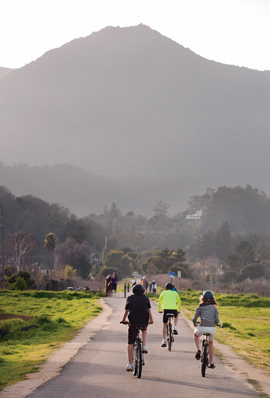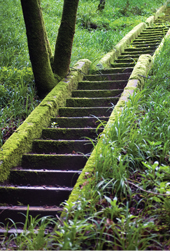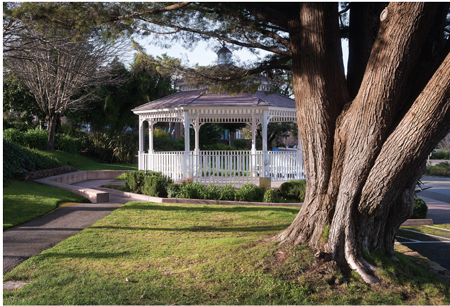Bayside houses, a charming downtown built around a square, overlooked by homes nestled into the hillside of Mount Tam—pretty, peaceful Corte Madera could have looked quite a bit different if not for the early efforts of active citizens.
“In the early ’70s we were faced with huge development proposals for both the hillside and marshland,” says longtime resident and former town council member Jana Haehl, author of a book on Corte Madera history. “We could have seen marshland filled in and eight times the homes on the bayside; shopping centers could have been three times the size and the population would be triple the size, just with what was on the table.”
The friction between developers and citizens came to a head when the development-friendly mayor and two council members were recalled by election in 1972 and Haehl and others involved in the recall effort were put in their place.
“We implemented a new general plan and zoning laws and succeeded in preserving nearly all of the open land,” says Haehl, who also served for many years as a district press secretary for Barbara Boxer. “We preserved ridge land, grassland, wetlands and wooded hillside and kept the marshlands pristine.”
 Haehl is aware that many in Marin see Corte Madera—home to both Town Center and the Village at Corte Madera—as the area with “two big malls where the freeway traffic always slows down,” but says there’s much more than just good shopping once you dig a little deeper.
Haehl is aware that many in Marin see Corte Madera—home to both Town Center and the Village at Corte Madera—as the area with “two big malls where the freeway traffic always slows down,” but says there’s much more than just good shopping once you dig a little deeper.
“Unlike some other Marin communities, we have incredible civic organizing,” she points out, with a multitude of groups still busy protecting, preserving and beautifying Corte Madera, including an active town band. “There is a satisfaction when you do something in your own town that you see every day.”
Mayor Carla Condon couldn’t agree more. She points to contributions from the public on projects like the recreation center refurbishment, the new dock at Higgins Landing, the design of the town logo (which features an egret in front of Mount Tamalpais—a nod to both sides of the town separated by Highway 101) and the flower baskets that hang all around. “The spirit of volunteering is what makes Corte Madera so unique; it’s unlike anything I’ve ever seen before.”
Condon moved to Corte Madera in 1996 and joined the planning commission in 1999 after undergoing a frustrating run-in with the approval process during a major home remodel. “I felt the process was way too cumbersome and not the most efficient and decided to spare others.”
Later, litigation over an affordable housing question led her to offer a “fresh perspective” in a 2001 run for city council, where she has served since. Here she helped craft a plan identifying new sites for affordable housing that would satisfy state requirements, which won federal recognition for its innovative and creative approach.
 But for future planning, Corte Madera now confronts a challenge faced by all Marin cities and towns: doing more with less. “We have incredible resources in our midst,” Condon says, both in terms of public support for projects and the efforts of town staff. The latter in particular “have been able to understand and confront the financial difficulties we face and maximize the resources we have.”
But for future planning, Corte Madera now confronts a challenge faced by all Marin cities and towns: doing more with less. “We have incredible resources in our midst,” Condon says, both in terms of public support for projects and the efforts of town staff. The latter in particular “have been able to understand and confront the financial difficulties we face and maximize the resources we have.”
Well-known Morgan Lane real estate agent and Corte Madera specialist Jimmy “Marin” Wanninger says the reason people choose to live in the town he also calls home is obvious. “People come here because you are close to everything—San Francisco, malls, town parks, the ferry—and we are north of the fog line,” he points out. “And we have the best Fourth of July parade in the county by far.”
Wanninger is heartened by the direction the housing market in Corte Madera is moving in compared to last year, but believes the bottom won’t be seen until late fall or next spring. Last year 49 homes were sold in Corte Madera under $1 million, 16 between $1 and $2 million and two over $2 million; 18 condos were sold. That’s a big drop in higher-priced homes sold compared to the peak in 2006 and a rise in the number sold for under $1 million. The good news seems to be all the new activity in the $1-million-and-above market countywide already in 2010. “It gives you an optimistic feeling,” he says.


